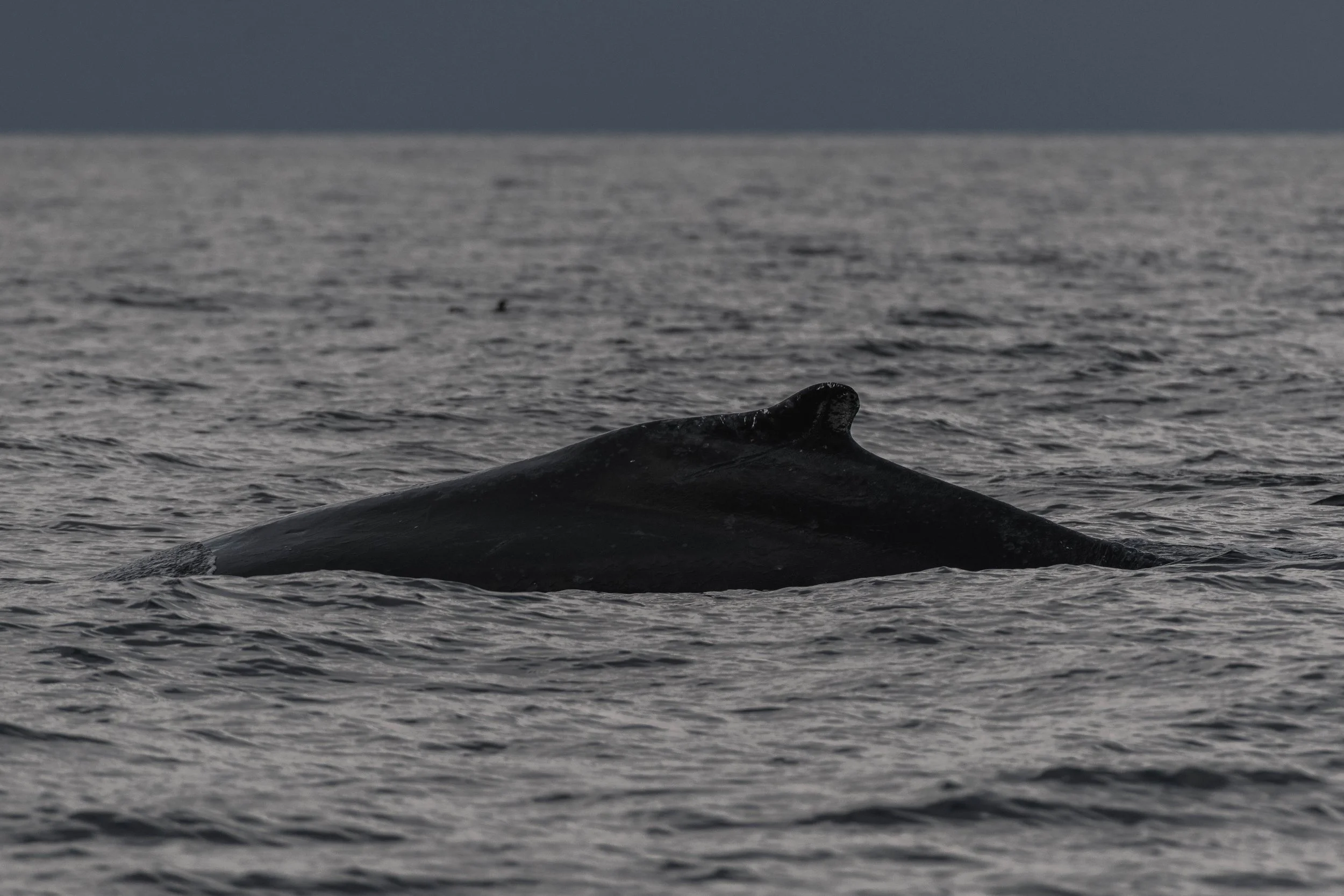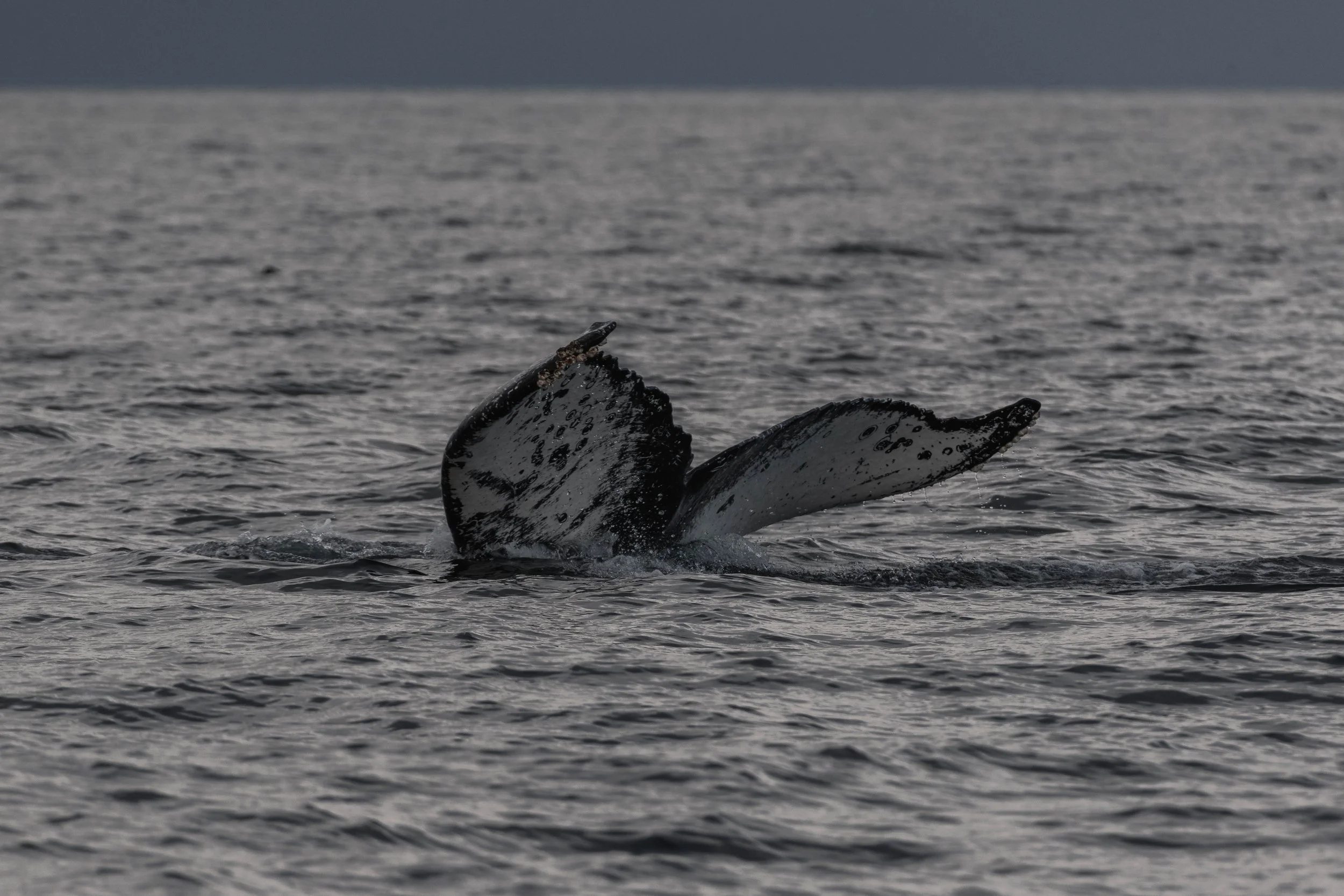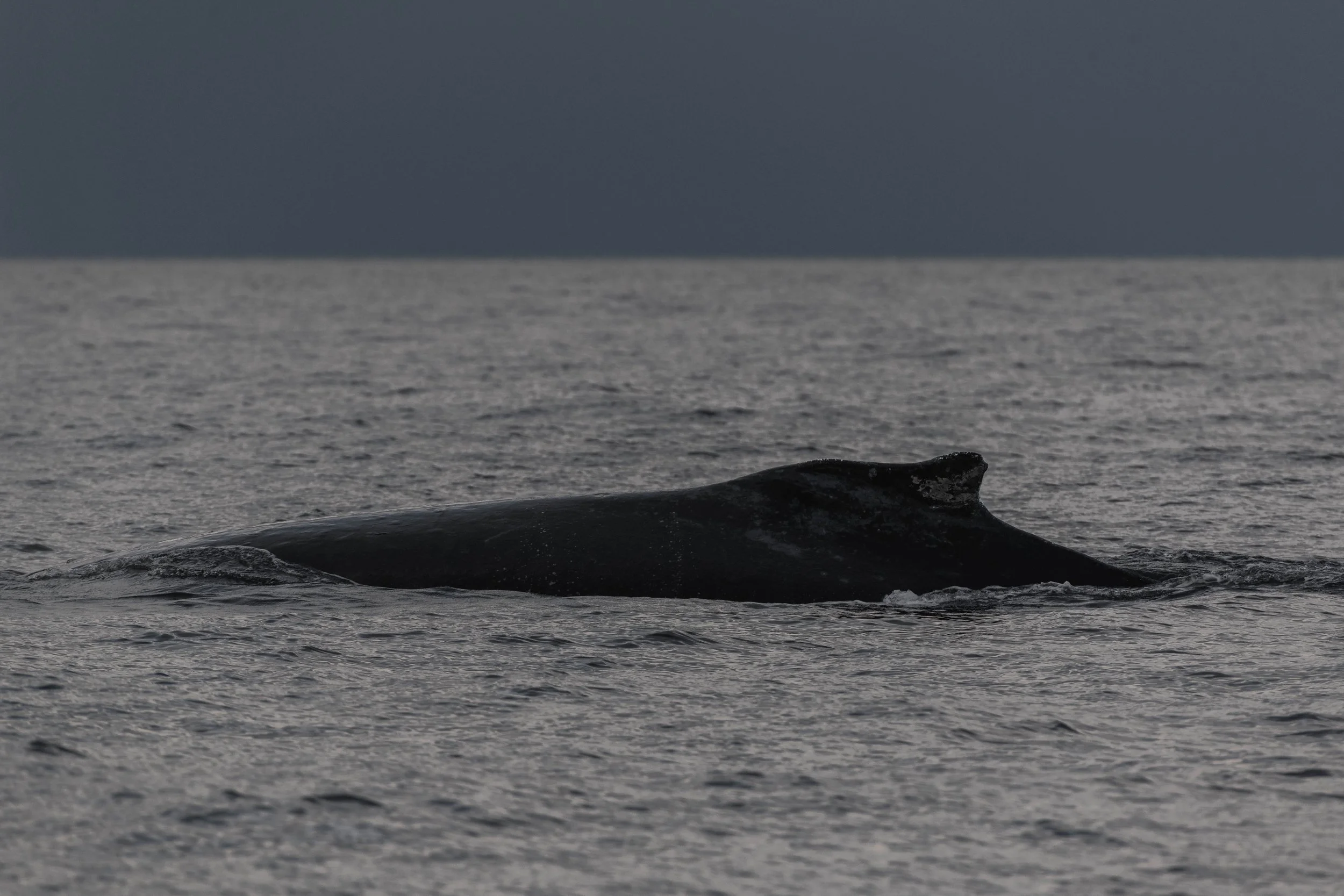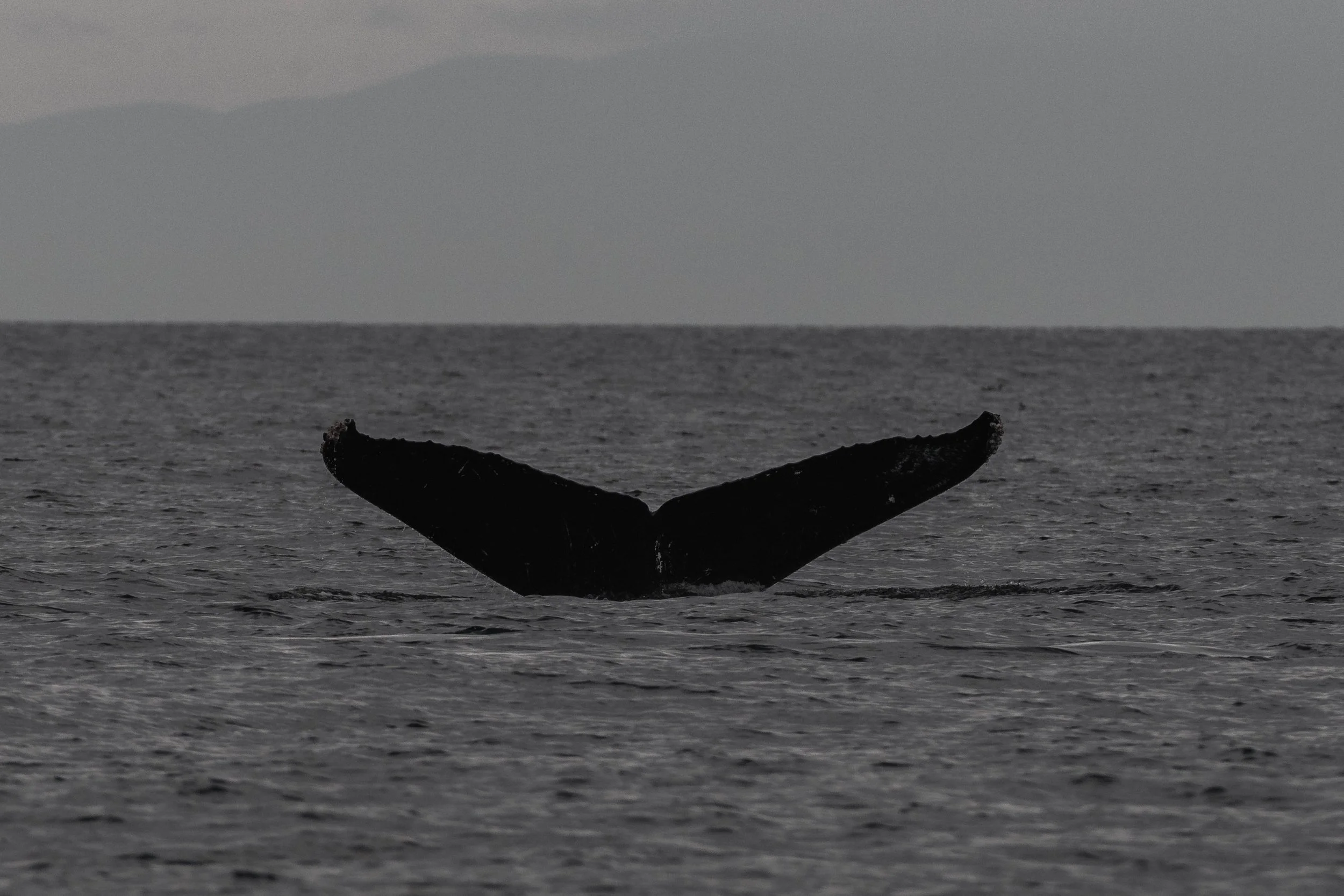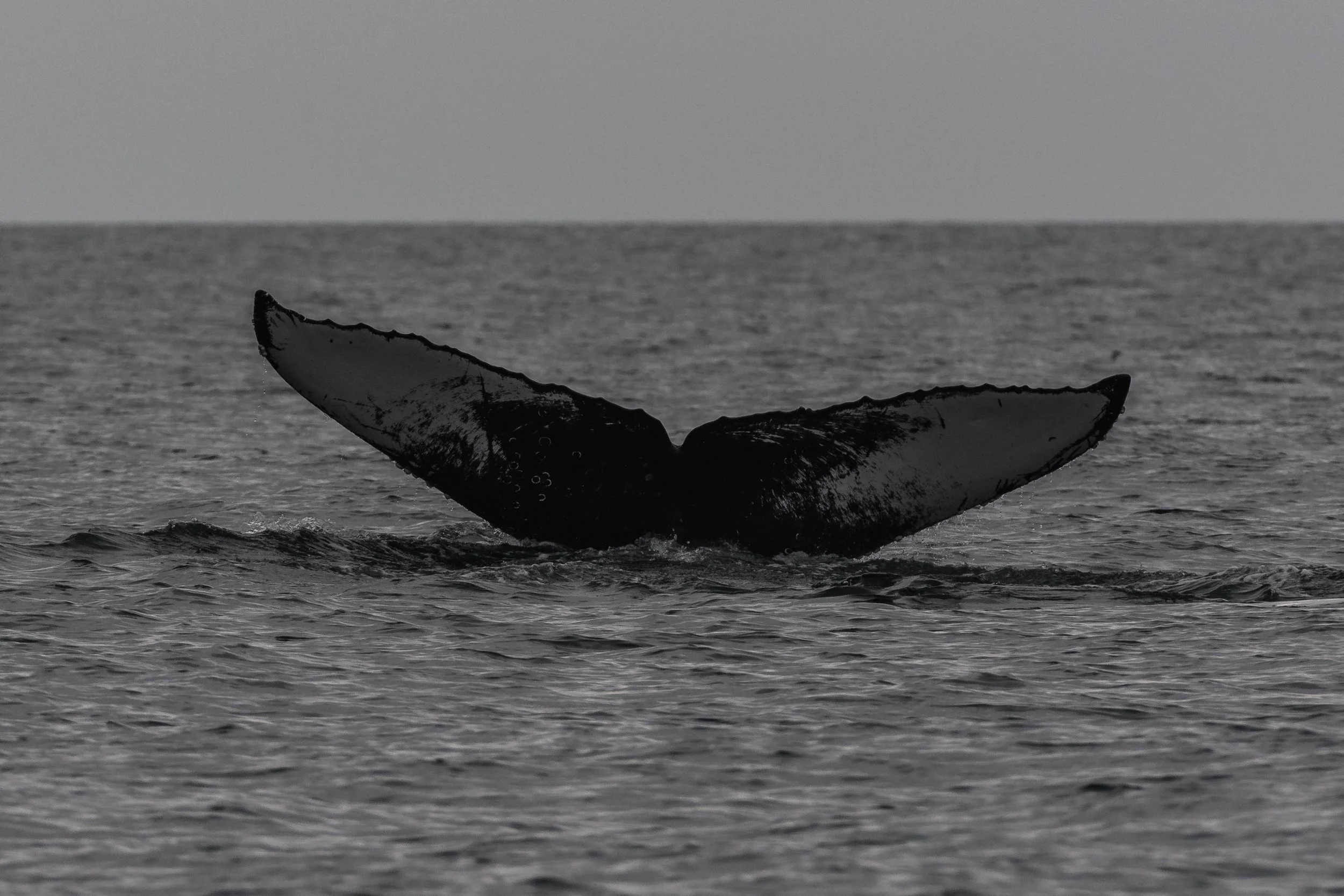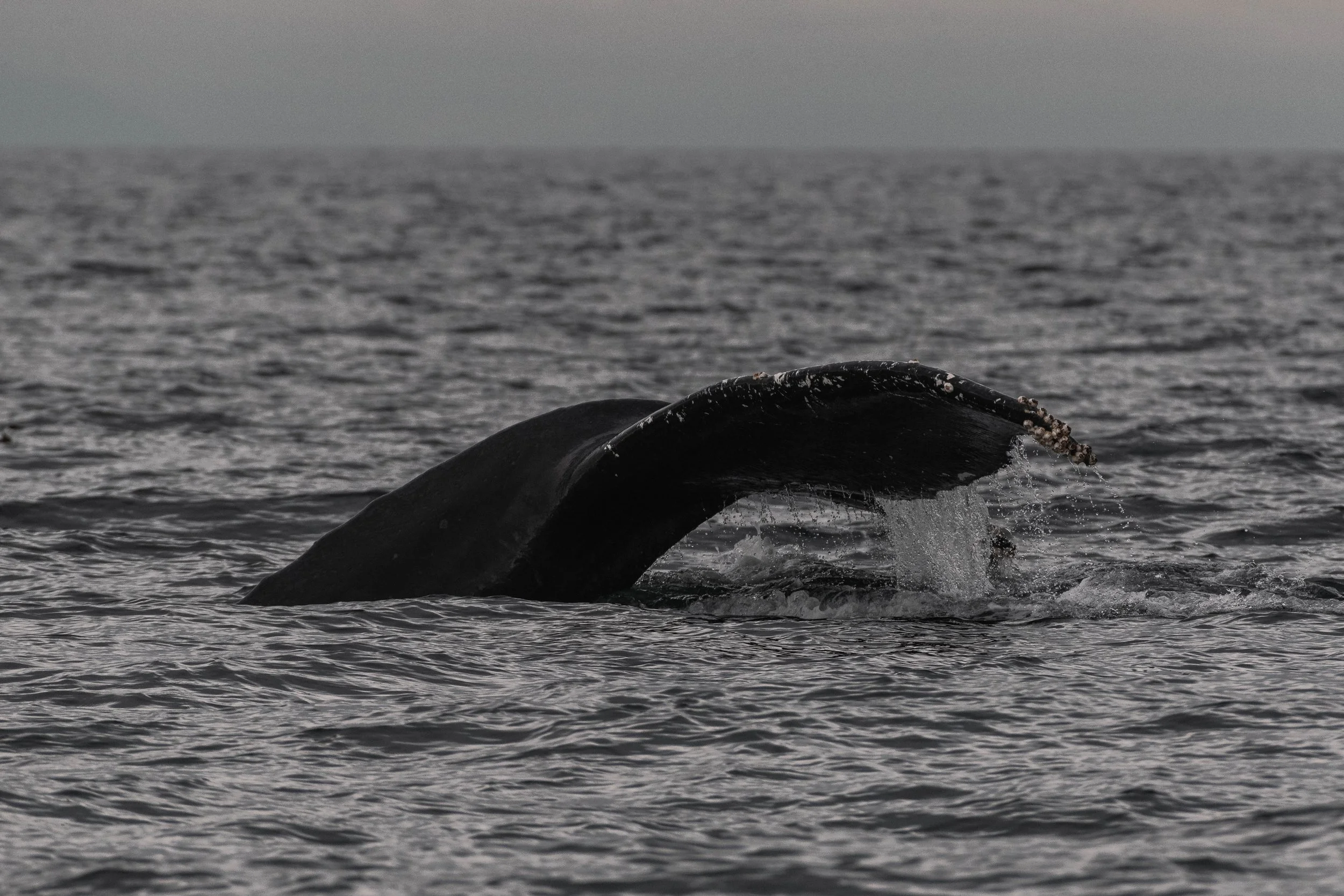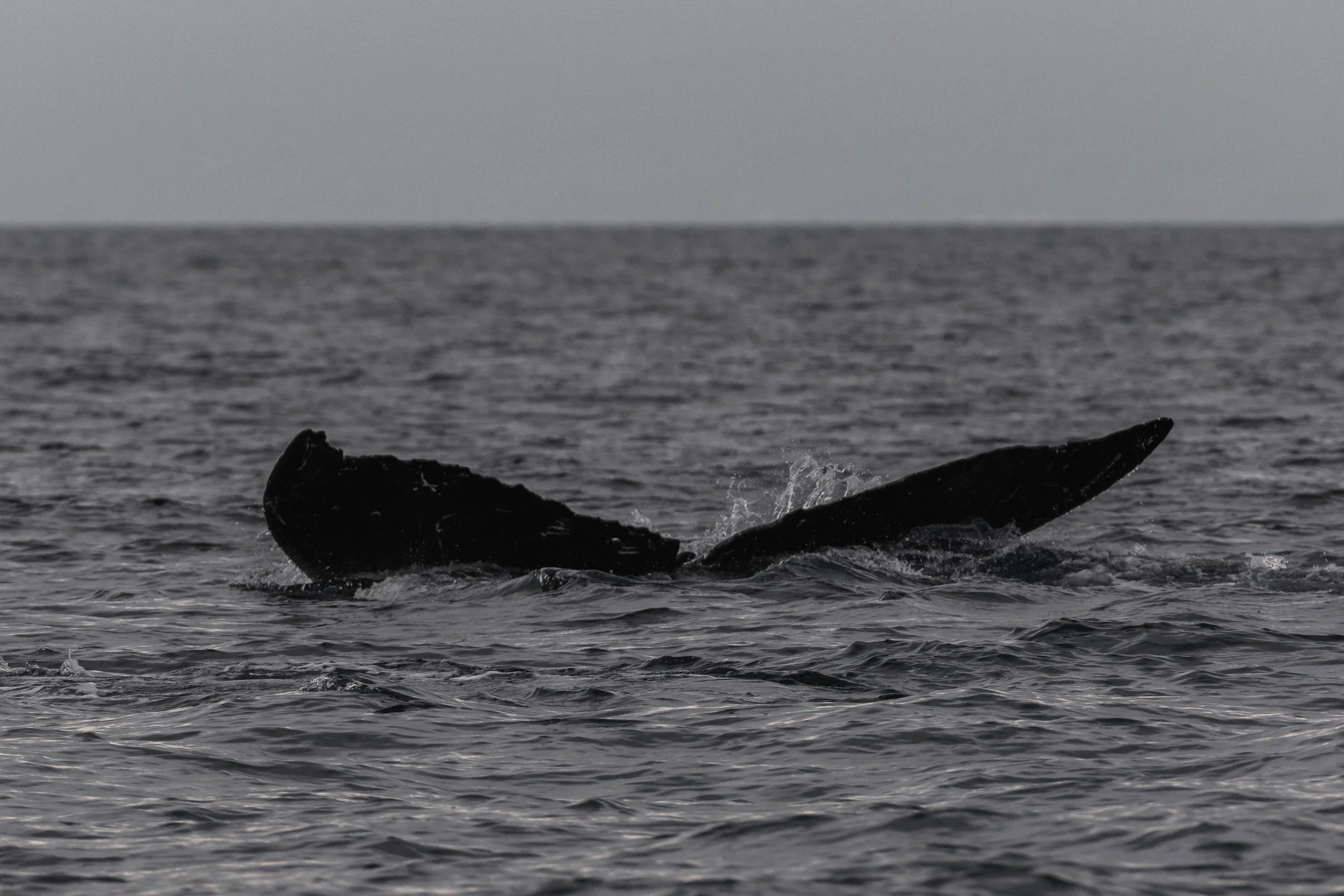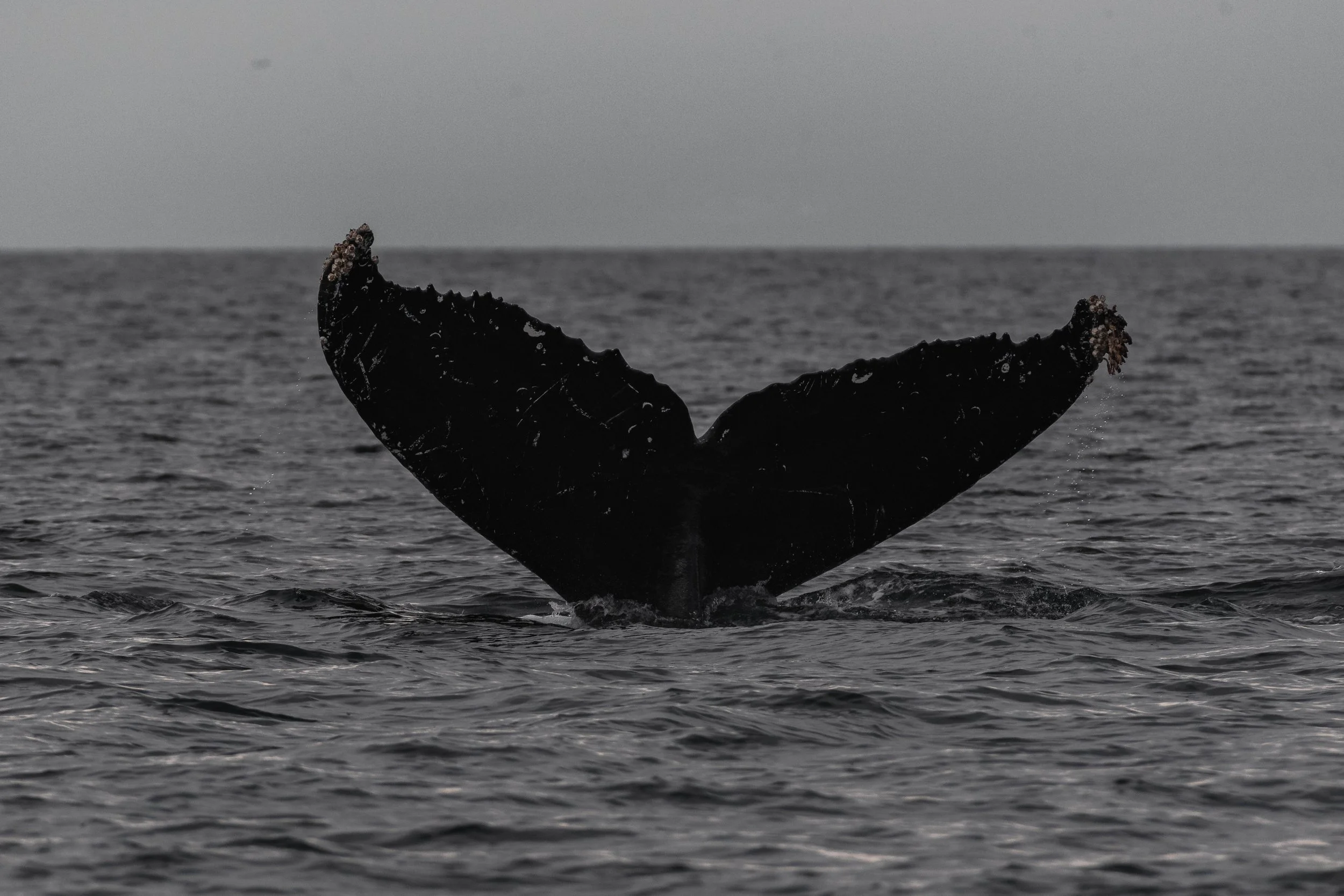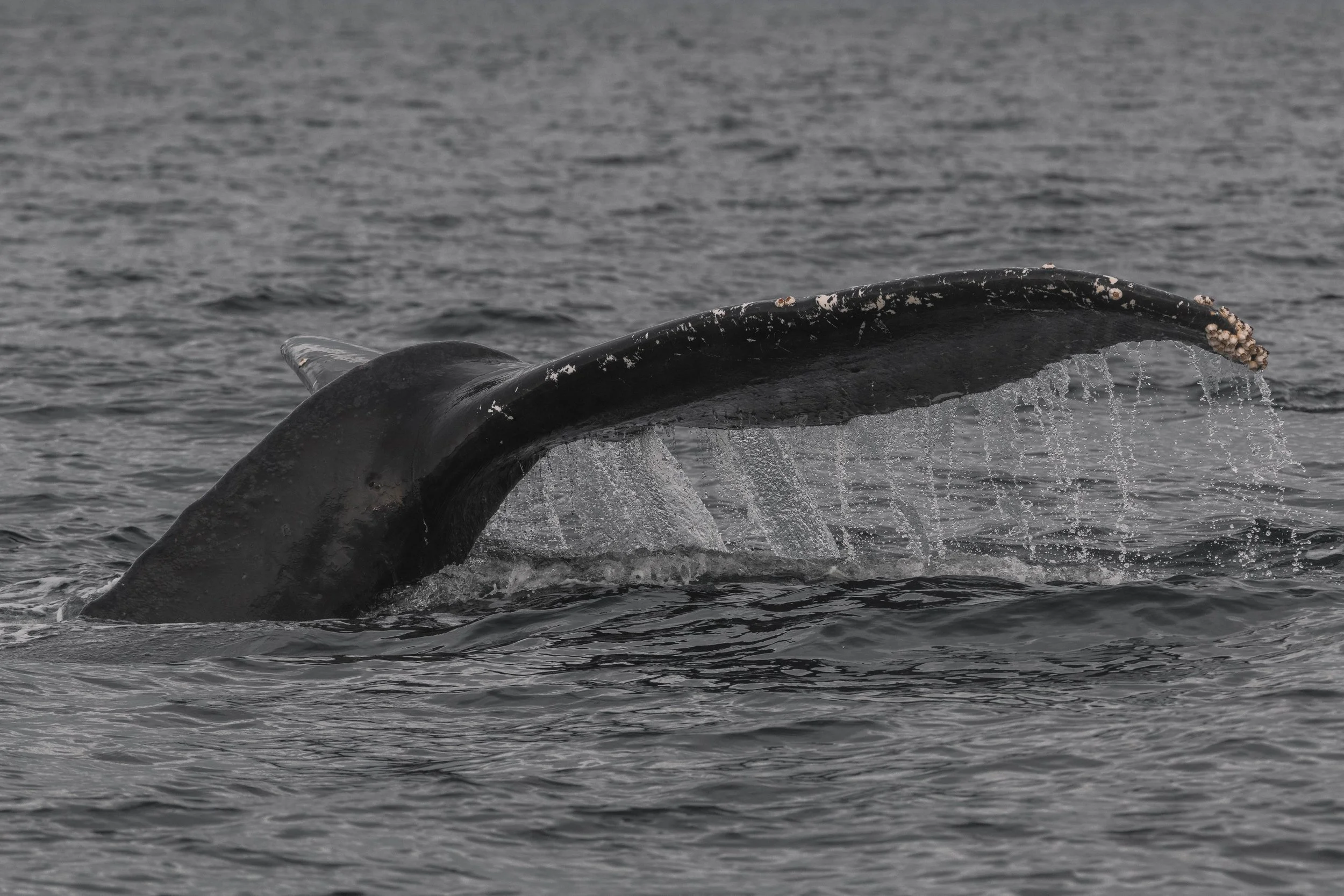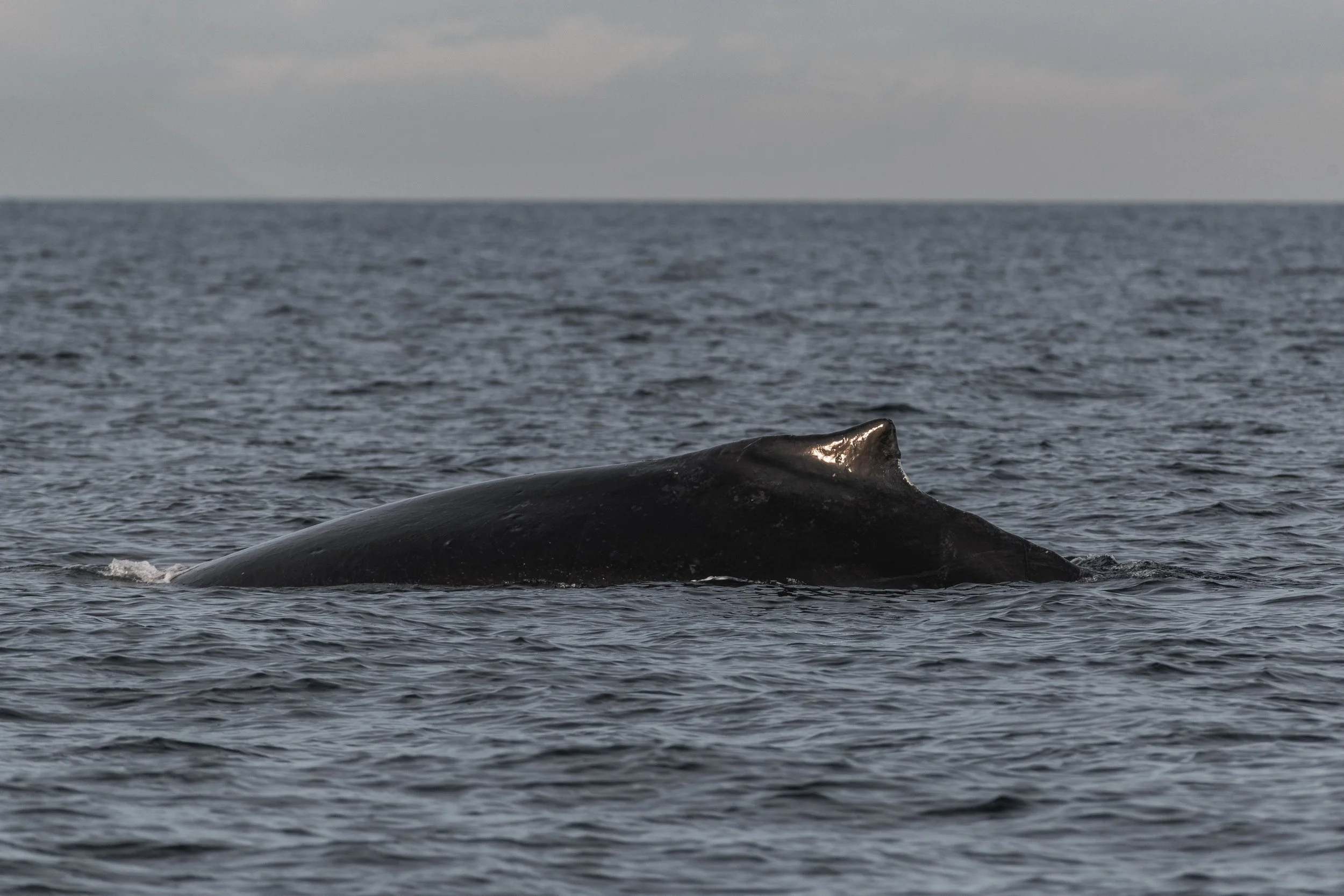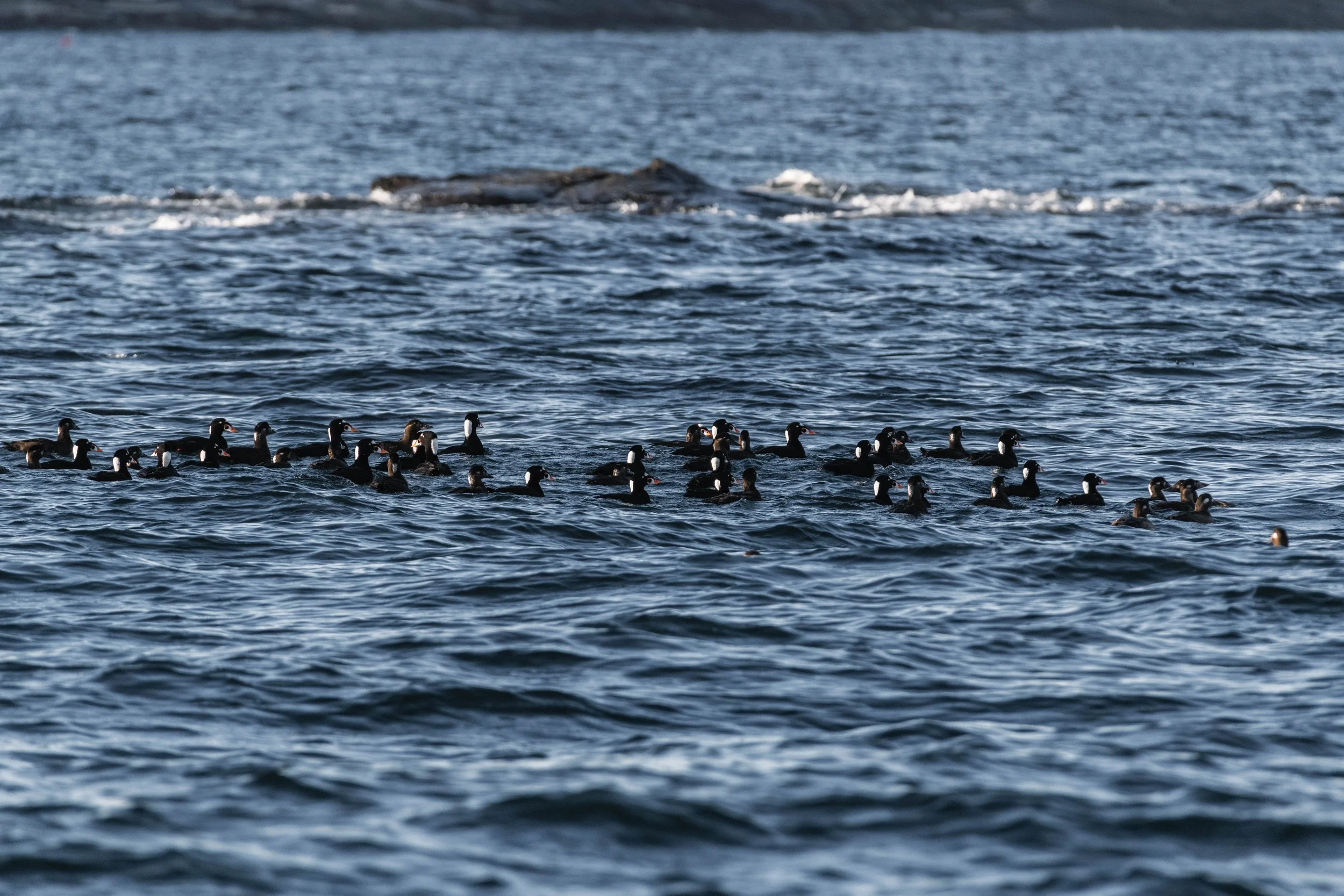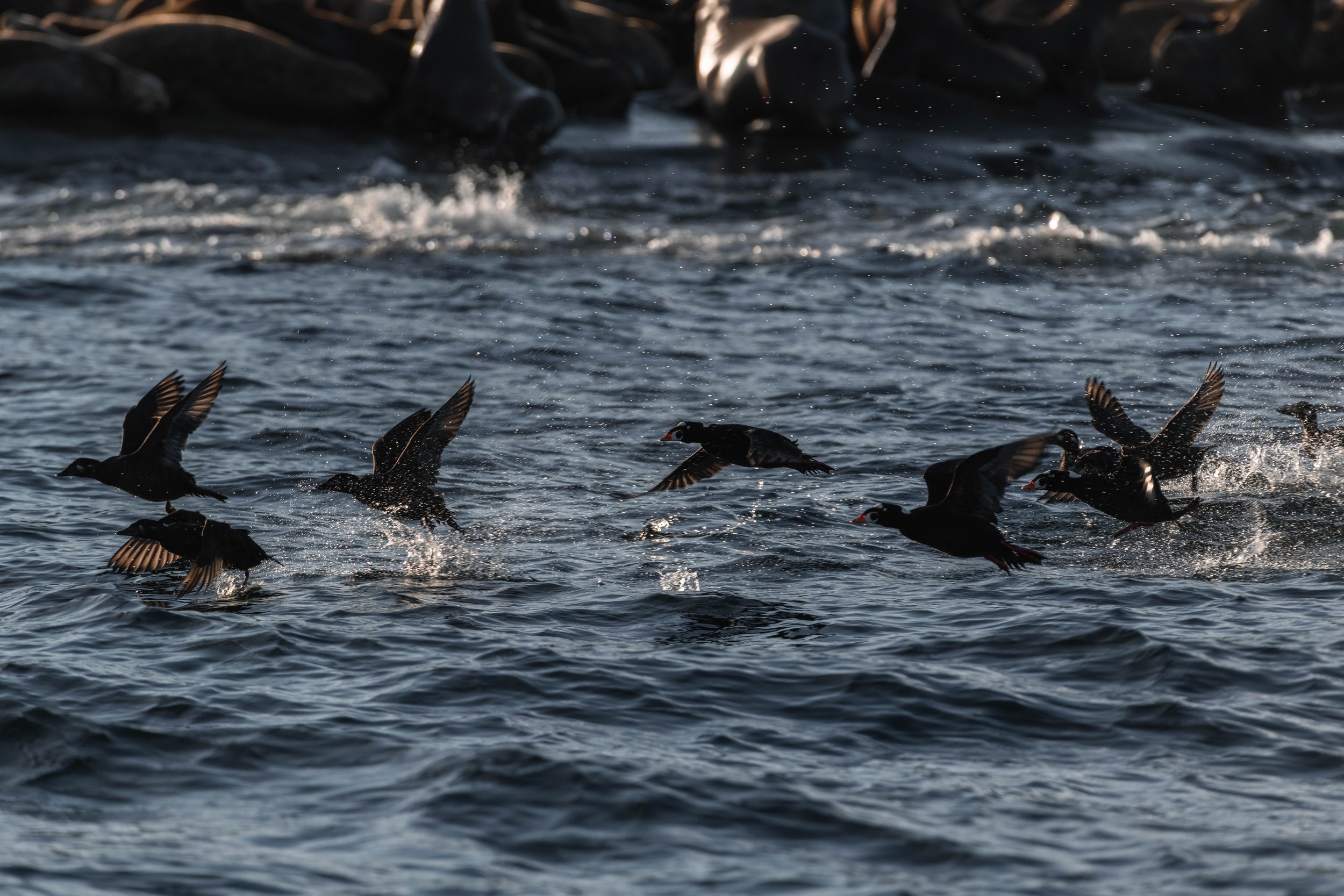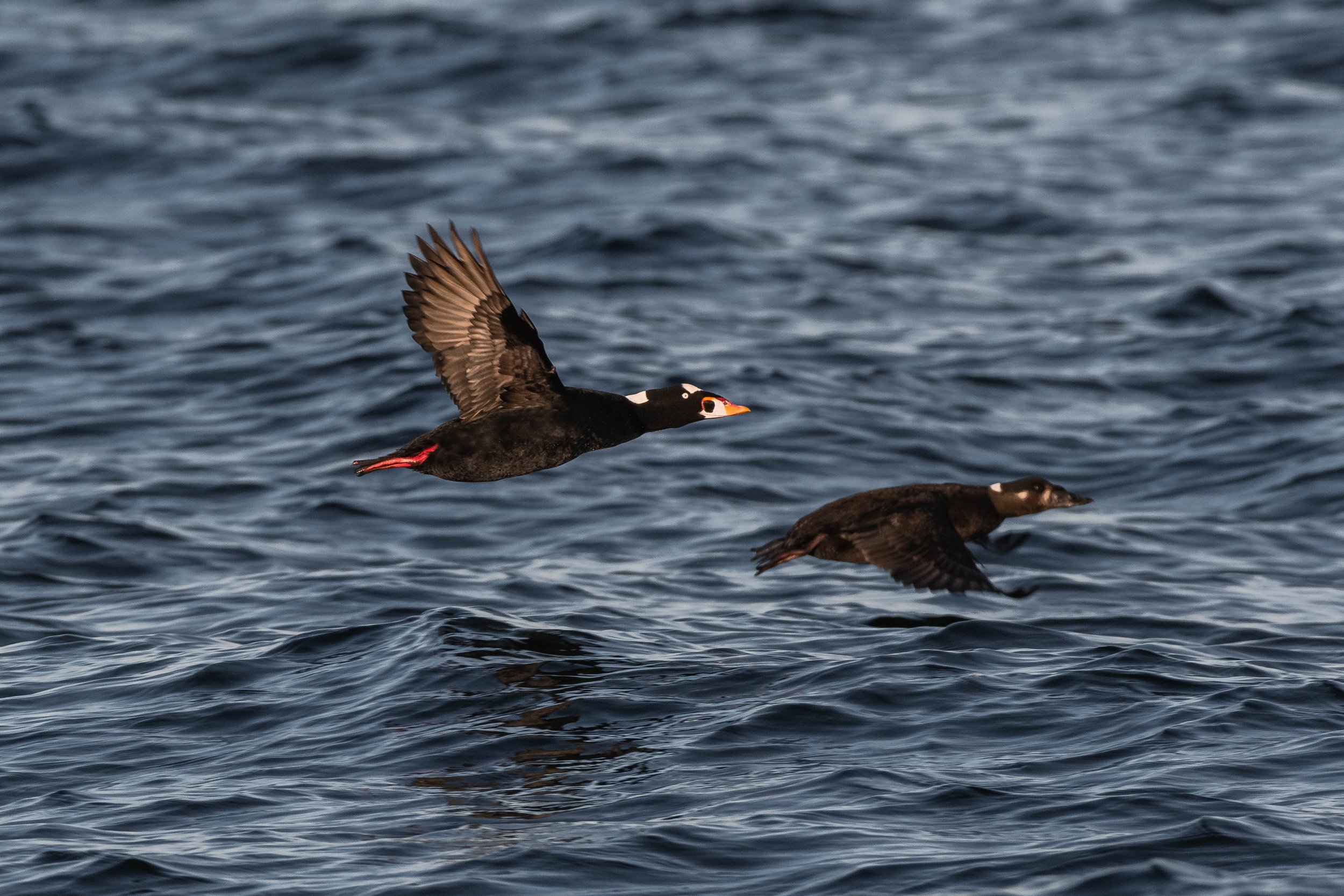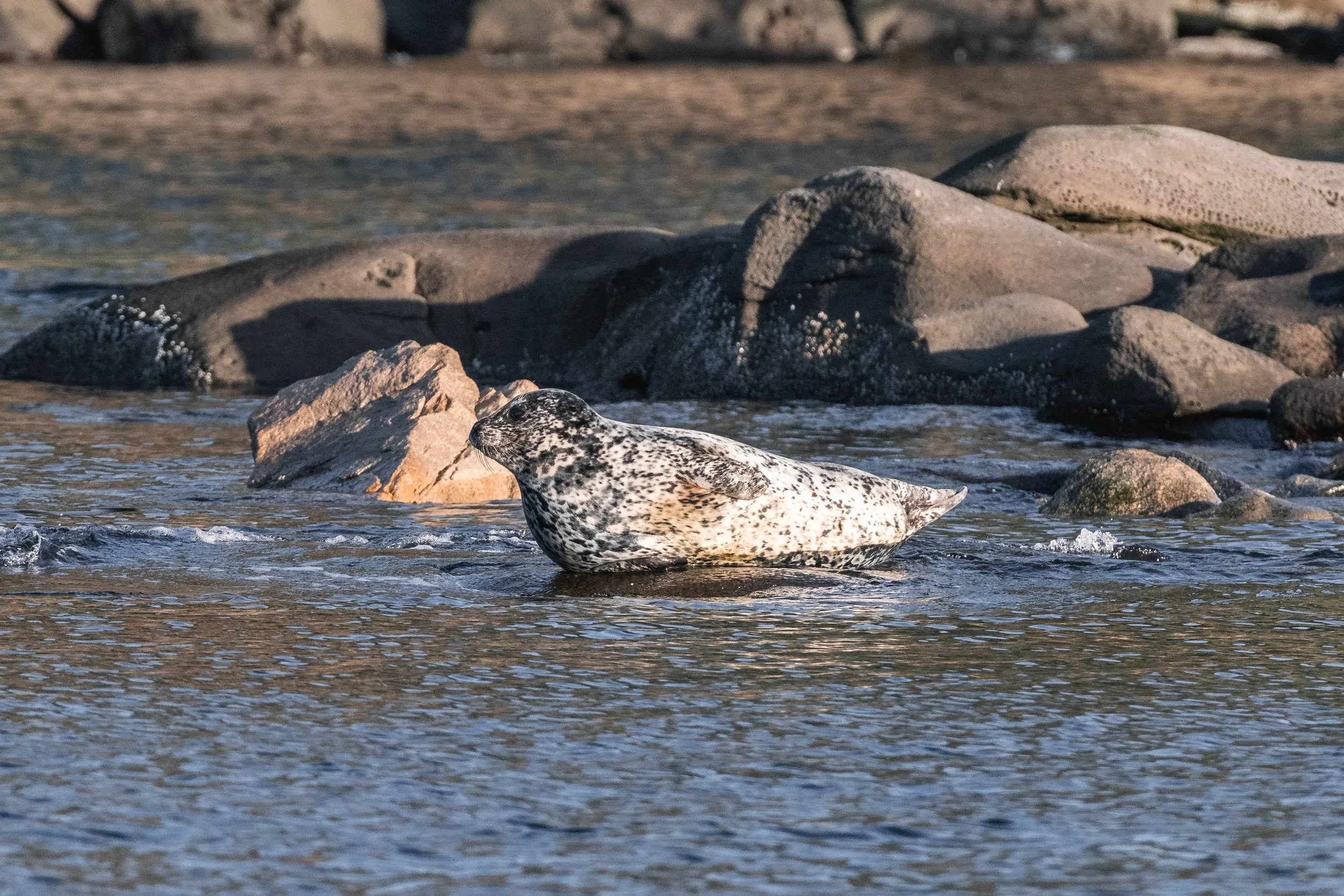November 20, 2025 - Another Bowl of Humpback Soup, Please!
It was another incredible day on the water! We started by heading south, navigating through the Southern Gulf Islands towards Porlier Pass. Inside the islands is not only beautiful, with the rocky shorelines and evergreen forests providing a beautiful backdrop, but it’s also a great place to find whales! The slightly narrower passages mean that there is a higher likelihood of spotting something in the same channel as you, given the typical spotting distance of whales.
While there weren’t any sightings to be had inside the islands today, that's okay. With some of our whales known to travel over 100 miles in a single day, you do have to be slightly lucky to spot them!
Once we reached Porlier Pass (the passageway separating Valdes and Galiano Island), we took it, leaving the islands behind us and entering a larger body of water, the Strait of Georgia. Out here, there is a whole lot more area to search, but the good thing is that it’s a very rich channel, so there is typically a lot to find here.
This held true today, since all of our humpback encounters occurred out here! We searched east of Galiano Island, and soon spotted signs of whales in the area: blows in the distance! It seemed we found ourselves in what we like to call “Humpback Soup” as we kept spotting more and more blows in the distance as we spent time with our first group of whales.
We ended up spotting 4 pairs of whales in this general area, with even more spotted in the distance, too far away for us to spend time with. The first two pairs of whales that we got to spend time with, Manta (BCZ0155) with Galaxia (BCZ0573) and Malachite (BCY1463) with Poseidon (BCX2078), seemed to be feeding in the area. They spent a few minutes at the surface, recovering their breath, before diving to chase down their prey. The prey for a humpback might surprise you, since these giant animals (nearly 17 meters long and weighing 35 tonnes) eat very tiny critters. Their diet consists primarily of krill as they spend their time in the Strait of Georgia, and they also eat small schooling fish if the opportunity arises. They do this by Filter Feeding, taking in nearly 20,000 litres of water at a time and pushing it back through the 400 baleen plates that hang from the roof of their mouth. All of their food gets stuck in that Baleen, which they can then gobble up! The fact that they eat very tiny animals means that they never evolved the need for a huge throat. If you make a fist with your hand right now, the diameter of that fist is about the same as the humpback’s throat. Granted, it can expand to accommodate about twice that size, but still, that's not very big at all!
These humpbacks are likely preparing for their long migration south, heading to either Hawaii or Mexico, depending on the individual. They make this nearly 6,000 km journey since that is where they breed and have their calves. The southern waters are warmer and have fewer predators, so it’s a great place to have these activities that might make you (or the calf) more vulnerable, but it comes with a downside. There’s no food for them while they’re there! They instead burn through the fat that they’ve built over the summer months in our waters for their energy, making it super important for them to get as fat as possible before they leave us! It’s no surprise then that we see them feeding so much while we watch humpbacks.
Sometimes, though, they might have other activities to do while they are here, like playfulness and curiosity! We got to see a little bit of that with our following two groups. The third pair we encountered was Nike (BCX1377) and Bond (BCX1640). Between their feeding dives, they seemed a bit curious about our boat and gave us a very close pass. Luckily, we know the whales well enough to anticipate this kind of behaviour, especially from specific individuals, and will shut down our engines if they seem to be approaching or surfacing closer than regulations allow. Nike might be one of the most well-known whale in the Salish Sea for this, often sighted as approaching boats. When we know whales are “muggers” like this, we tend to give them some extra space to discourage it, but sometimes it can’t be helped. While thrilling to have one of these whales so close, it’s very dangerous for the whales to get too familiar with boats, since if the boat is running or moving, it can harm the animal. Lucky for us, it didn’t last long, and the pair went back to feeding as usual in the area.
As we spent time here, we spotted something else in the distance: huge splashes and whales launching themselves in the air! While it didn’t last long, and they were done by the time we got there, it was still amazing to see at a distance. Once we got there, it seemed that these whales had tired themselves out and were now resting. We snapped some photos of the whale’s dorsal fins, but weren’t able to match them on the boat. Luckily, going through the pictures for this blog, I was able to figure out that this last pair was YinYang (BCY1058) and Meqe’ (BCZ0492) resting together. Interestingly, this is the first time this season we have spotted these two, suggesting that their typical feeding grounds must be elsewhere in BC for most of the time they are here. Small temporal changes to their preferred feeding grounds, like this, are essential information to increase awareness of these animals and better protect them during this critical time of year. Thankfully, all of our sightings gathered on tour go to researchers in the area, like our Conservation Partner, Keta Coastal Conservation!
Eventually, it was time to leave this Humpback Soup behind and head back towards Nanaimo, but not before a quick stop at Stinky Rocks, a popular haul-out site for our Seals and Sea Lions! We were very lucky here as well, spotting all three species of pinniped in one spot: Steller Sea Lions, California Sea Lions, and Harbour Seals! The rocky outcrop is a great place for all of these pinnipeds to rest before they also take advantage of the high productivity in the Strait of Georgia, looking for fish and cephalopods for their next meal.
As we returned to Nanaimo we reflected on our amazing tour spent with 8 humpback whales and a variety of other wildlife. Big thanks to the onboard Marine Naturalist, Aly Kohlman, for capturing such amazing photos throughout the entire experience! These photos are available below.
A family of River Otters drying off on a log in Dodd Narrows.
Galaxia’s dorsal fin.
The underside of Galaxia’s tail as they dive.
Manta’s dorsal fin.
Manta going for a dive.
Poseidon going for a dive.
A lovely fluke waterfall as Malachite lifts his tail to dive.
The underside of Malachite’s tail.
Nike going for a dive.
The underside of Bond’s tail as they dive.
A beautiful look at Nike’s tail.
A lovely high fluke from Nike.
Nike diving during the close pass.
YinYang’s dosal fin.
Meqe’s dorsal fin.
A Steller Sea Lion striking a pose on the rocks.
Steller Sea Lions on Stinky Rock.
A very itchy California Sea Lion.
A large male Steller Sea Lion.
A large group of Surf Scoters.
Take-off!
You can see the difference between the male (left) and female (right) Surf Scoters.
A Harbour Seal not giving up on that last bit of rock.


